You are herePainting the Black River RR switcher
Painting the Black River RR switcher
I've started a new painting project, a switcher locomotive for Black River RR. I tried to look it over closely before quoting a price, but I missed some problems. The good news is that these problems can be remedied with a small amount of automotive body filler. Small amount as in I'm using it to fill a bunch of shallow grooves made in the paint by a previous worker. Not so small in that I'm finishing my second gallon of the stuff. These grooves were made by a 4.5 inch angle grinder, maybe with 36 grit sandpaper. I missed them initially because the paint has lost its gloss, and the irregular surface didn't show up. If left as it was, the grooves would show up really bad; it's being painted gloss black. Gloss black is the least merciful color available. The grooves are probably less than an 1/8th inch deep, certainly not more than that; but if painted with dark gloss paint, they will look to be ½ inch deep. No exaggeration. The goal is not only to make a great looking, durable finish; but to correct the wrong methods used before. The next guy to repaint this switcher will only need to scruff sand it; then mask and paint. As of this writing, I'm a few hours away from finishing the sanding; that includes sanding the filler that I used.
I employed a different tool on this locomotive; an air chisel. I think I could have gotten away with painting over the diamond plate walkways as they were, but the paint looked pretty bad. It had filled in to the ridges in most places, was cracked in some places, and I've seen proof positive that cracked paint on a steel surface can be worse than no paint at all. That plus, this is somebody's workplace for hours at a time, and I want some things to be neat and in order.
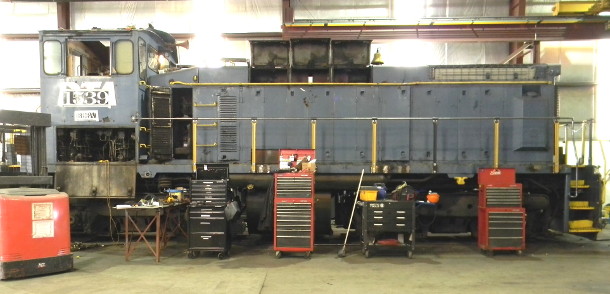
In the first picture, you see the switcher as it was in the other building, while the mechanics were working on it. In the second picture, you see a spot near the door prior to sanding. In the third picture, you see the same spot after sanding. The low places remain the original blue color. These grooves are all over the switcher, there are hundreds of them. In the last picture, you can see the air chisel used to remove rust and paint.
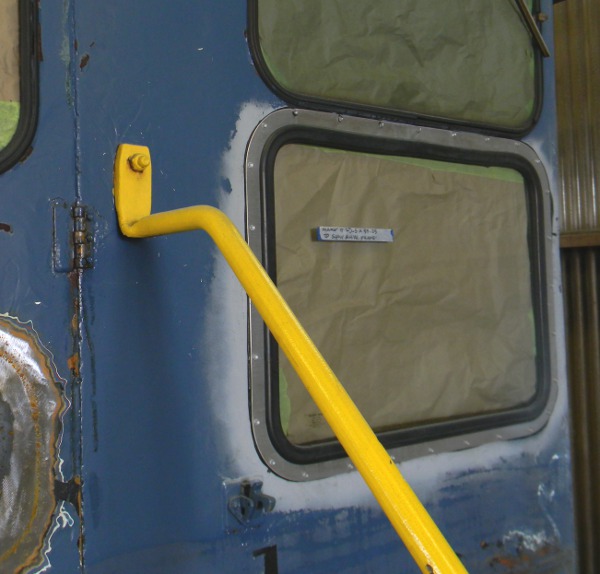
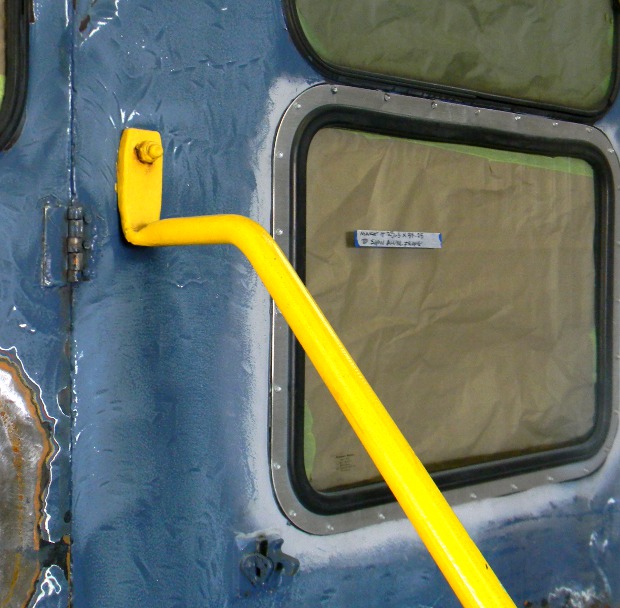
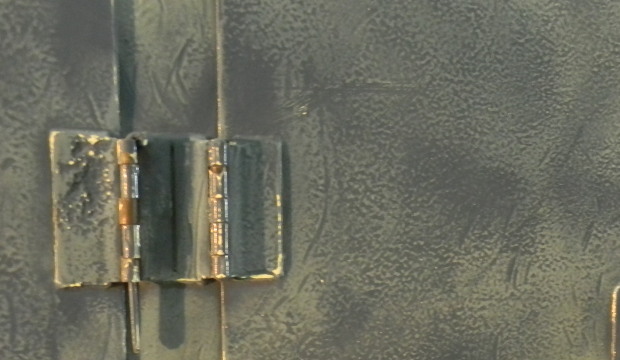
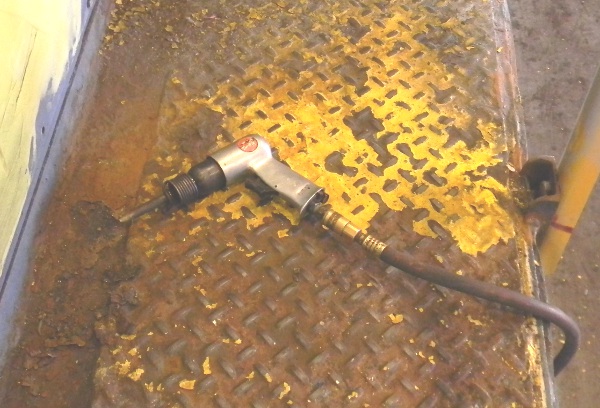
The trick to fixing them is a careful application of the filler. Too thin, and it won't do the job; too thick, and it will take too long to sand. I've tried 3 different types of 6 inch adhesive sanding disks, the best is a white open coat paper about 100 grit. Another new method on this switcher is to remove the coupler release lever assemblies. These run right across the pilot, and make it very difficult to work around them. Now the face of the pilot is wide open, I'm already enjoying that. It will allow me to make a smooth surface for taping off the stripes that go there.
On the next page, I'll show the new way I'm masking the windows.


